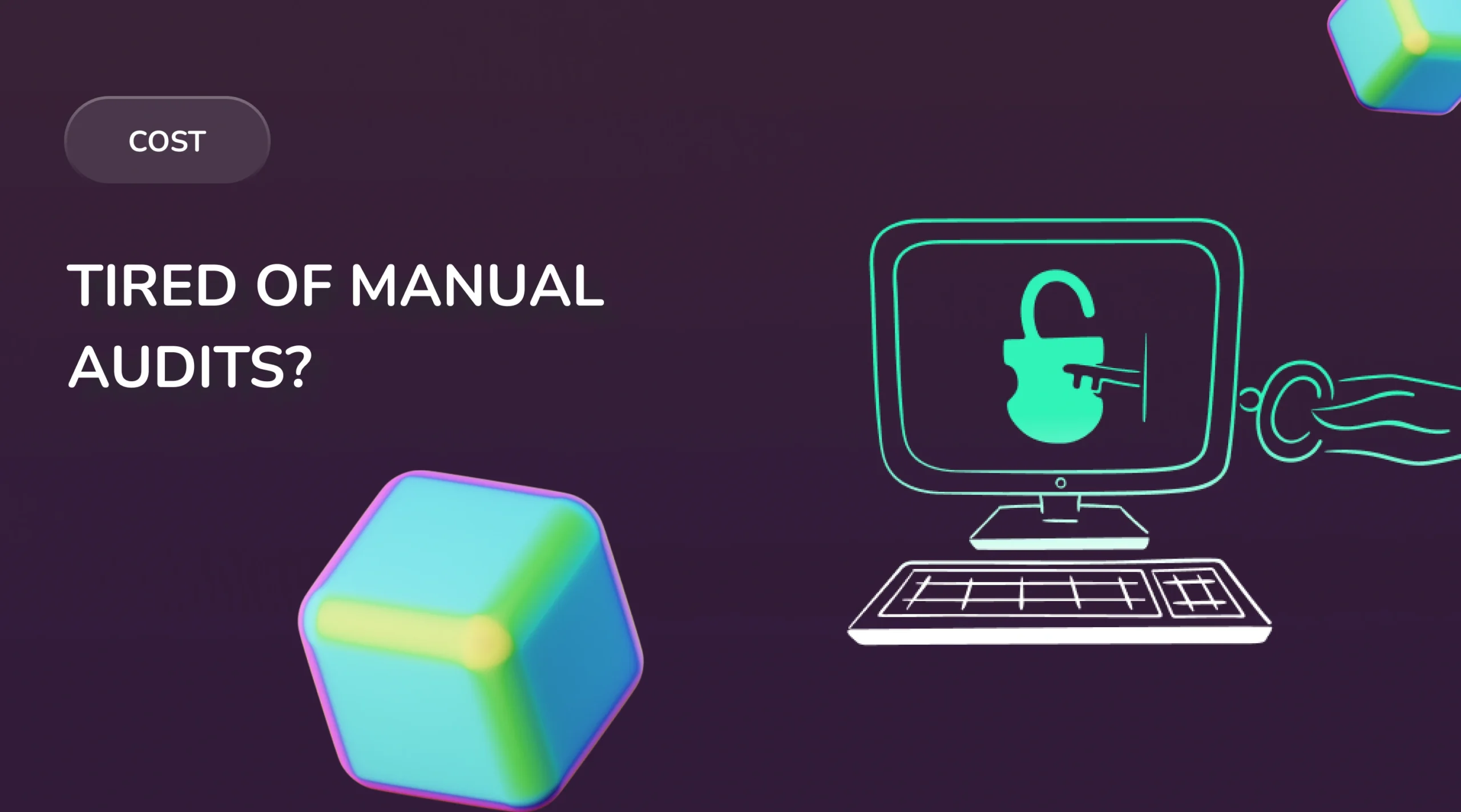We know that at some point in your life, you were a “victim” of traditional audit tools that technically ticked all the boxes but gave you zero insights. And this is the reason why you want to switch your audit tools in healthcare. New tools can provide you with in-depth analytics and help you prevent potential issues in real-time.
Interested in how medical claims auditing software can give you more than just monitoring compliance? In this article, you’ll learn:
- How modern audit tools help uncover hidden patterns and root causes
- Ways to use audit data for personalized staff training
- How dashboards, automation, and integration make audits smarter
- What features should to look for when choosing a medical audit solution
- Real-world examples of how analytics and AI are transforming clinics
- How to create long-term value through smarter auditing
The Expanded Role of Medical Auditing
In the medical field, the term “audit” often evokes images of inspections, penalties, and formal compliance checks. Audit software and eTMFs, in this context, are often viewed as a means of “protection” to ensure compliance with an obligatory audit.
Meanwhile, formal compliance alone is hardly a path to excellence. You may lose tons of important data that, in the long run, could lead to huge losses. So, you should look for a compliance audit software that can help you understand the underlying processes of your business. While compliance isn’t negotiable, fine software should help you to:
- Reduce recurring errors,
- Improve documentation quality,
- Avoid financial losses from incorrect coding or payment delays,
Build transparent, efficient internal processes.
Without deeper analysis, you’re just “patching holes” instead of reinforcing the foundation. That’s why modern medical auditing software should be more than just another recording solution. You need to use it as a powerful analytics tool, so it can give you meaningful operational insights to drive real improvements.
Identifying Systemic Issues
Instead of just spotting errors after they occurred (which is a typical case for old software), you need to start understanding why they happened. Healthcare audit software can help you with it by identifying whether recurring mistakes are linked to a specific role, a recent change in patient flow, or inefficient documentation templates. Maybe you face a physician’s overload, which directly affects the accuracy?
For instance, your clinic may notice frequent coding errors in post-operative notes. After you deeply analyze the whole process, you may’ve traced the issue back to a recently updated template. By adjusting it, it’s possible to drop the error rate by 50-70%.

Auditing is important. But what is even more crucial is to find what aspects of your current workflow actually holds you back
But to get all those insights, you need to use medical audit and review solutions that automatically analyze hundreds of cases to determine recurring patterns in them.
Trend Analysis Over Time
Instead of relying on static reports, you can use healthcare audit software with interactive dashboards to analyze your team’s performance in real-time. You can track how documentation quality changes after updates, and identify which departments consistently perform better or worse.
In the long run, it helps you to spot correlations between certain service types and the frequency of reporting errors, uncovering potential bottlenecks. Traditional audits often highlight symptoms, but not the root causes. Meanwhile, modern audit tools help you to find the actual causes.
If there are frequent delays in entering data after consultations, the issue might not be the physician’s diligence. The real problem could be that they simply don’t have enough time between appointments, or that the internal software interface is too complex, requiring multiple steps for a single action.
A Foundation for Targeted Staff Training
Staff training is one of the most time-consuming and resource-intensive initiatives in healthcare settings. It’s often done “just in case,” “for everyone,” or simply “because reporting errors have resurfaced.” As a result, you spend days on training without any results. But well-collected and analyzed data by the medical auditing software can provide clear signals about who needs support and in what areas.
Imagine this: A clinic discovers that 70% of physicians are making the same documentation error when handling a specific service. The issue doesn’t stem from individual carelessness. Instead, the cause may be a confusing process or the lack of clear instructions.
In such cases, the right solution isn’t a generic, hours-long training session, but rather updated templates, a short 15-20 minute learning module, and real examples of how to correctly fill out the documentation.
Modern audit software can generate an “error profile” for each staff member, role, or department. For instance, one person might consistently struggle with coding, another with discharge documentation, and someone else might regularly miss deadlines for lab result entries. The modern compliance audit management software isn’t meant for punishment. It’s a basis for precise, time-efficient training that doesn’t waste anyone’s time or demotivate diligent staff who simply make occasional slip-ups.
What Healthcare Audit Tools Can Give You: A List Of Benefits
If you want medical audits to stop being just boring paperwork and actually start helping, you need a system that turns all that data into tangible insights. And that is exactly what modern digital solutions can give to you. Let’s examine the core advantages of compliance auditing software against more traditional approaches.
Automated Tools for Data Analysis
Forget about manually reviewing each case! Modern medical audit software can make patient care times faster due to automation. These tools scan electronic medical records (EMRs) to identify inconsistencies and potential issues such as missing fields and wrong codes.
It significantly improves the response time of the whole team since the system flags all potential errors in real time, giving doctors and nurses the opportunity to immediately edit the patient card.

You need an actual automation, not some “let the IT guy will review it later” tools
So, if a physician forgets to fill out a mandatory field during patient admission or accidentally selects the wrong insurance code, the system instantly alerts them. Yes, even before it causes downstream issues with billing, reporting, or care coordination.
Data Visualization: Dashboards, Charts, and Reports
Static error logs are still a thing since at least they show you some data. But to get a comprehensive overview of your actual results, you should use data visualization tools. Healthcare audit software can give you it, presenting both historical and current data through interactive dashboards with powerful filtering options.
You can easily track trends, such as the decreased number of documentation issues after the implementation of new guidelines. Dynamic charts and graphs make it simple to visualize improvements, patterns, and risks over time. Moreover, you can even use heat maps that highlight the most vulnerable points in your workflow, which helps you to pinpoint potential weak spots.
Forget about relying on assumptions. Use the latest analytics tools to make well-informed decisions, backed by clear numbers and real-time insight.
Integration with Other Systems: EMR, CRM, and HR
Auditing is not an isolated function. When healthcare compliance audit solutions are integrated with electronic medical records (EMR), customer relationship management (CRM), and human resources (HR) systems, they unlock a much deeper layer of context and insight.
Such integration allows the system to:
- Pull real-time data on patients, appointments, discharges, and contact history,
- Factor in staff workload, vacations, and sick leaves,
- Automatically link documentation quality to financial or HR performance indicators.
For example, discharge-related errors may correlate with changes in staffing schedules or peak workload days. If you don’t use medical auditing services, you may not even notice such patterns. But after connecting the dots across systems, you’ll gain a 360-degree view of their workflow.
Planning Improvements and Tracking Outcomes
If you really want to remain successful, you need to conduct regular audits. It will be perfect if you make it at least a bi-weekly practice, so you can quickly respond to potential checks.
If nothing changes after each audit, it’s not auditing. It’s bureaucratic box-checking. You don’t want it. Contact the Corpsoft Solutions team to change your workflow.
Modern healthcare audit management tools enable you to create actionable plans based on identified issues, specifying who needs to fix what and by when. You can assign responsible persons and monitor progress in real time. Later, you can use this data to build a clear action plan with responsible individuals at every department and concrete deadlines.
Such platforms provide an overview of all tasks, giving you in-depth insights into the clinic’s workflow. Your team can add notes and clarify details directly within the system, improving internal communication.
How Medical Audit Software Actually Transforms a Clinic
As we’ve already told you, implementing compliance audit management software can do far more than help you tick regulatory boxes. When done right, it becomes a powerful engine for improving internal culture, efficiency, and quality of care. To simplify your grasp of the differences between these two types, we’ve gathered all crucial distinctions in one table.
| Area | Before (old way) | After (with quality audit management software) |
| Quality of Care | Errors in medical records were either spotted too late or missed entirely. | The system automatically flags issues with real-time alerts as soon as they occur. |
| Processes | Lots of duplicates, paperwork overload, and wasted time. | Streamlined workflows, automated docs, way less manual routine. |
| Team Motivation | Staff had no idea what they were being judged on. | Transparent metrics, so everyone can see their contribution and growth. |
| Decision-Making | You basically rely on gut feeling | Real-time analytics show weak spots and potential trends. |
| Ongoing Training | Generic training that may feel pointless to many employees | Targeted learning based on the typical mistakes of specific roles or teams |
| Audit Prep | Stress, chaos, and last-minute document scrambles. | Reports are pulled in a few clicks, so you are always audit-ready. |
| Patient Engagement | Patients didn’t notice any internal improvements. | Clinics can communicate quality benchmarks and care standards. |
Investing in audit tools helps you build an accountable system, where each team member knows their role and sees their impact.
How Analytics and AI Are Already Transforming The Industry
There are already numerous cases of implementing smart analytics software into the workflows of healthcare institutions. While most of them are relatively small or sealed by NDAs, there are multiple well-known examples that illustrate the global potential of data-driven healthcare.
At Marshfield Clinic, one of the largest private medical practices in the U.S., modern data analytics tools help them improve financial and clinical performance. The organization implemented a system to analyze diagnosis-related group (DRG) coding. It led to higher diagnosis precision, revealing potential weaknesses in patient care protocols.
In Kenya, Penda Health partnered with OpenAI to launch their clinical copilot powered by generative AI. It works just as you can imagine: a doctor shares the symptoms and papers such as MRI or CT scans, and AI tools help them to find a potential diagnosis.
These examples highlight how well-integrated technology can support real clinical needs by aligning data, workflows, and care quality.
What to Consider When Selecting and Implementing Medical Audit Software
Choosing the right medical coding audit software will impact documentation quality, financial performance, and patient care. If you want to develop a tool that perfectly suits you for years, keep the following aspects in mind.
Look for Functionality and Flexibility
A medical audit system should support the full scope of compliance. Prioritize platforms that can:
- Identify coding and billing discrepancies
- Analyze documentation
- Monitor compliance
- Generate reports for different stakeholders
Keep your medical coding audit software flexible. Your institution is definitely going to evolve within the next few years, so you need to develop a scalable system that can adapt to your future needs. A perfect solution integrates smoothly with existing electronic health records (EHRs), practice management systems, and analytics dashboards. It unlocks a more cohesive data-driven environment.
Ensure Fine User Experience and Accessibility
If you want your team to actually use your app, make the software as user-friendly as possible. Medical audit software isn’t just a tool for compliance officers. Physicians, medical coders, administrative staff, and even management teams rely on it daily.
A fine audit software should be designed with the end user in mind. So, you need to ensure that it offers clear navigation, logical workflows, and minimal clicks to complete tasks. Adapt some extra features like smart notifications to prevent mistakes even before they occur.
Auto-fill capabilities reduce repetitive manual input, saving time and minimizing the chance of data entry errors. Rapid anomaly detection helps staff spot unusual patterns or outliers, enabling faster corrective actions.
Make sure that your new platform will work on PCs and mobile devices. This flexibility allows users to engage with audit tasks whenever and wherever it’s most convenient for a team. A user-friendly interface of the medical coding auditing software reduces resistance to change and accelerates the return on investment.
Get a Fine Support and Training
Even the advanced software is only as effective as the team behind it. If users aren’t confident in how to navigate the system, you simply waste the potential of your new system. We know that you don’t want it, so you need to ask your team what their current issues are and what they want to find in the app.

To ensure that your staff will use the tool, you need a sort of “IT handyman” from the developer team that will instruct your employees in detail and encourage them to use new solutions.
Ensure that the team that will develop the app will be available 24/7 and provide multilingual support. Healthcare is one of those industries where every second literally counts. Slow or inefficient coding can lead to problems in the long run. It will be better to discuss everything before you even start designing a new system.
Ensure that the developer team will create plenty of training resources for your team. It would be perfect if the vendor gives you a mix of formats such as webinars, tutorials, manuals, a Wiki, or role-specific training paths. Make sure that at least someone from the team will be available 24/7, so your staff will get the support that they actually need.
Don’t Forget About Data Security
As you guess from their name, healthcare compliance audit tools should be totally compliant with the latest regulations. Since the health industry is full of sensitive data, you need to remember that there is zero room for error. That’s why any medical audit software must comply with data regulations such as HIPAA (in the U.S.), GDPR (in the EU), or local health data laws relevant to your region.
Look for developer teams that treat security as a foundation. They need to design a service with end-to-end encryption (both in transit and at rest), granular access controls that limit who can view or edit what, automatic audit trails that log every action, and multi-factor authentication.
Together, these measures prevent unauthorized access, accidental disclosures, or intentional tampering. A secure system that keeps detailed logs and clear documentation makes it much easier to respond to external reviews, legal requests, or inspections from regulatory bodies.
Wrapping Up
While in many countries it’s obligatory to have auditing software, you need to implement an actual powerhouse solution, even if you are a small clinic. The proper tools can help you catch potential errors even before they occur, leading to improved patient care quality.
Automated data analysis and targeted training all come together to transform your clinic. By embracing medical billing audit software, you create a culture of accountability and continuous growth where every member knows their impact. Your task as their employer is to make their work as comfortable as possible, so they can provide the best medical services in your name.
Ready to move beyond checklists and paperwork? Contact the Corpsoft Solutions team today to discover how modern medical audit software can become your clinic’s competitive advantage.
Subscribe to our blog



